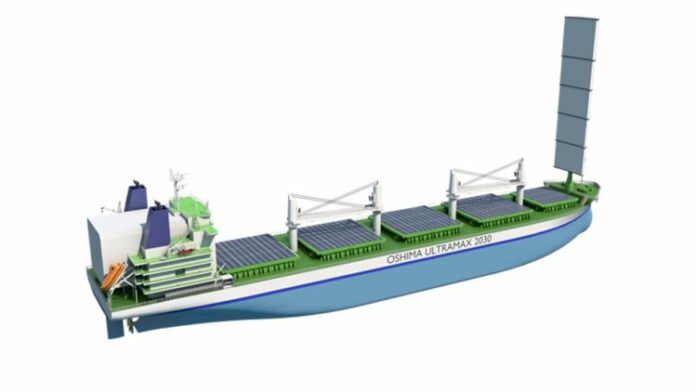At the recent Nor-Shipping exhibition held in Norway, the project partners announced a next-generation 62,000 dwt Ultramax Bulk Carrier design that is optimised according to actual operating profiles, and that will meet coming emissions legislation. The design demonstrates that emission levels from conventional merchant vessels can be significantly reduced in line with International Maritime Organization (IMO) targets.
The project goals included the achievement of low emission levels, both at sea and in port, the fulfilment of the IMO’s requirements to reduce CO2 emissions per ship´s capacity-mile by at least 40% by 2030, and zero emissions during waiting time. A further aim of the project has been to create a new standard that maximises the return on investment (ROI) for the owner. A key objective was to minimise greenhouse gas (GHG) emissions through the application of currently available technologies.
“Our smart marine initiative emphasises collaboration between the various stakeholders, and this project is a prime example of how effective such collaboration can be. The design is based on actual operating profile data from Ultramax bulk carriers and it incorporates an LNG-fuelled Wärtsilä 31DF dual-fuel main engine connected to a power take out (PTO) shaft generator and controllable pitch propeller (CPP), and the result out-performs all existing designs in terms of efficiency and sustainability,”
says Stein Thorsager, Director, Merchant and Gas Carrier, Wärtsilä Marine.
“To help the industry meet the ambitious GHG reduction targets set by the IMO, the industry needs to come together to advance ship design. This design halves the EEDI (Energy Efficiency Design Index) of comparable vessels, and sets a new standard for low emission bulk carriers,”
says Trond Hodne, Director of Sales & Marketing at DNV GL.
The high efficiency of the propulsion solution reduces the EEDI by 50 percent compared to standard vessels of this size and type. The EEDI provides a specific figure for an individual ship design, expressed in grams of carbon dioxide (CO2) per ship's capacity-mile.
Additional benefits include the ability to operate in an environmental mode while in port through the main use of solar panels, the installation of an LNG tank that is dimensioned based on the capacity needed for the operating profiles and the availability of LNG bunkering infrastructure, an optimized hull shape, and the option to also install a hard sail to generate extra propulsion. The hard sail system is being developed jointly by Oshima Shipbuilding and Mitsui O.S.K. Lines.
“Greater efficiency and better environmental performance has been made possible through collaboration with Wärtsilä and DNV GL. Oshima alone could not have come up with this new innovative design, which includes optimised propulsion, energy storage and solar panels. It represents a future proof solution that will enable bulk carrier owners to comply with legislation while also lowering operating costs,”
says Eiichi Hiraga, President at Oshima Shipbuilding.



